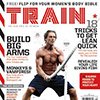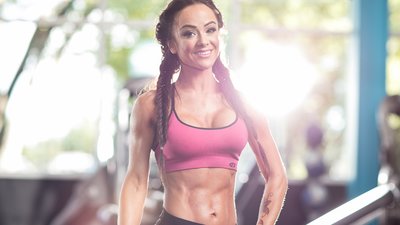Whether you're just starting college, clawing your way up the corporate ladder, gearing up to start a family, or enjoying retirement, now is the perfect time to get fitter than ever. There's no "bad" age for committing to a workout regimen.
Increasing your physical output at any time of your life can provide a host of benefits ranging from emotional stability and deeper sleep to a stronger heart and immune system.
However, depending on your age and current stage of life, your physical needs change, and your workout should too. Here are the goals you should be working toward for each phase in life so you're always feeling your best.
Teens And Early 20s: Make The Most Of It
Your body is doing everything in its power to turn you into the ultimate baby-making machine. That's a good thing, even if you don't see kids on the horizon.
"It means your hormones are balanced in such a way to make working out and looking fantastic the easiest it's ever going to be," says Lisa-Jane of Wildcat Fitness UK. "Your metabolic rate is typically higher in your early 20s, too, which can be a great advantage when it comes to encouraging your body to burn fat while maintaining muscle. Doing this now will set a fantastic foundation for your health and fitness in years to come."
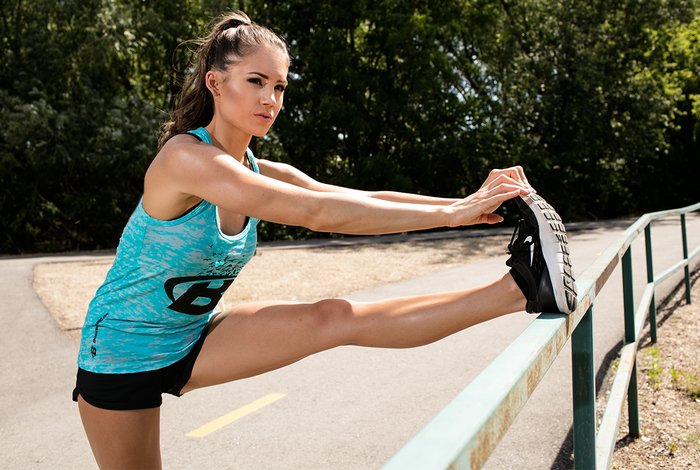
Your goal: Don't let all that good news go to your head. Now is the time to prime your body for a life of exercise by getting into the habit of regular cardio and strength training.
"Habit" is the key word here. At this age, it's common to yo-yo between months of slamming your body though rigorous workouts while consuming nothing but kale and green smoothies and essentially throwing in the towel by living off of pizza and wine. But that will mess with your body and your mind. You'll start to hate yourself during your "bad" phases, which may lead to lack of confidence and a pattern of disordered eating.
So focus on a healthy body rather than a beautiful one. If you do that, you'll look great without even trying. "That means thinking about what goes in—food, drink and, yes, even the odd cigarette—and what that'll do to you," Lisa-Jane says. "If you want to look fabulous, only put fabulous things inside your body. That means reaching for quality food and opting for raw, natural, and organic when possible. Avoid problems further down the line by eating food as close to its natural state as possible."
Late 20s To 30s: Prioritize Efficiency
Big life changes mean big body changes and, at this age, it's usually career or kids that get in the way of your exercise and diet regimen. Late nights at the office desperately trying to claw your way up the corporate ladder can mean eating junk food and forgoing your lunchtime trip to the gym. Similarly, a new baby brings a whole new meaning to the word "tired."
"It's easy to feel like exercise is impossible at this time," says Lisa-Jane. "You convince yourself that you'll catch up with it later. We've all been there. But the old saying is true, even when it comes to exercise: Why put off until tomorrow what you could do today? It isn't necessarily about slogging it out in the gym for hours on end. Even 15 minutes a day can be enough to make a difference!"
A quick Tabata/HIIT workout or a bodyweight resistance circuit at home will still burn calories and keep that metabolism revving, not to mention give you the energy to push through those long days. "Just work hard in the time you do have, and once the results come, you'll feel motivated to keep at it," she says. "The key is making exercise a part of your life, not something you'll do when you can find the time."
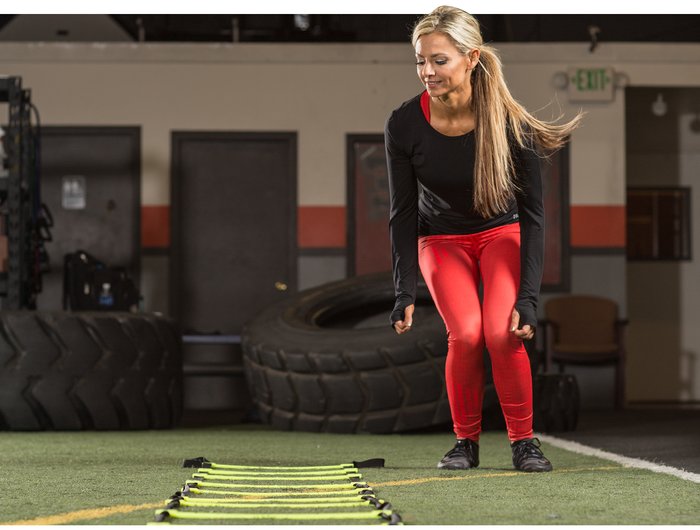
Your goal: Don't give up, but don't beat yourself up either. "Building a career or having kids requires major input, emotional and physical, so don't despair if you're not exercising as much or as often as you used to," says Lisa-Jane. "But think about how you can build exercise into your life. The options for working out at home have never been better, and there are plenty of apps and YouTube channels out there, which means it's much easier to find a workout that suits you. If you find self-motivation hard, find a full workout online, and allow a virtual trainer to put you through your paces."
This is a great time to sign up for classes. "New mothers often need time out of the house, and a regular class is a good way to guarantee that. Chances are, you'll meet like-minded people in the same situation who will help support your goals and hold you accountable when you don't show," Lisa-Jane explains.
Even when you feel too tired to change a diaper, an hour-long session of Pilates, kickboxing, or aqua aerobics will actually energize you and get you back to feeling "normal" faster. Similarly, the stress of striving for career goals can be washed away with a kickboxing class or yoga.
Signing up to a class also creates a sense of necessity. You'll feel more obligated to go than if you try to go to the gym when you've got free time. Because, let's face it, who has free time?
Late 40s And 50s: Build Muscle To Burn Fat
Say hello to your "menopot," the pot belly women can develop as a result of perimenopauseormenopause itself. If you're experiencing irregular periods, or changes in period-related symptoms, your body is probably already going through hormonal changes leading to menopause, when your periods will stop completely.
These hormonal fluctuations can trigger weight gain, especially around your middle. They can also slow your metabolism, which means that even if you're eating the same diet, you may find yourself putting on weight anyway. Unless you're undergoing hormone replacement therapy, this is something you'll need to live with, which is why exercising becomes even more important.
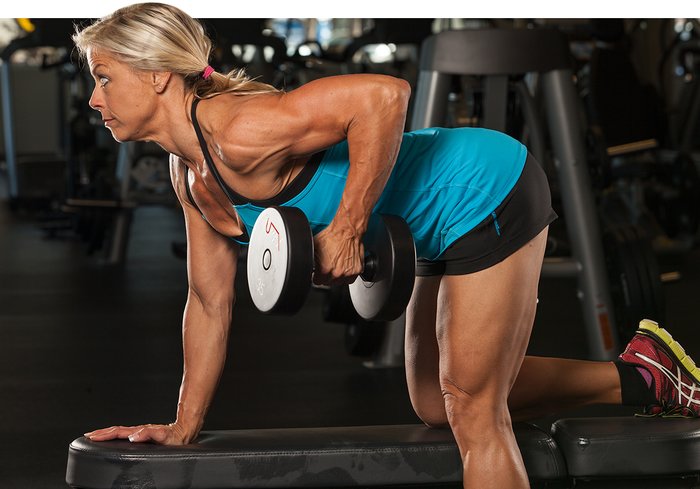
Your goal: The good news is that research from the University of Pennsylvania School of Medicine shows lifting weights can prevent or slow down increases in body fat, particularly around your midsection.[1] Rather than only focusing on losing weight through dieting and cardio, focus on building strong muscles. Strength training shouldn't replace cardio, though.
Combine both to keep your heart and circulatory system strong while putting on muscle. "Kettlebell swings are perfect for combining strength and aerobic training," says Claire Booth, an instructor for the kettlebell organization StrongFirst.
Late 50s And Beyond: Surprise Yourself With Strength
While some people may be able to get away without exercising when they're in their 20s and even 30s, it's impossible to do the same once you reach your late 50s.
In fact, many of the symptoms associated with aging aren't necessary elements of growing older; they're the result of less exercise. For example, lack of strength, flexibility, and poor circulation will manifest in many different ways. You'll be more prone to varicose veins, sagging skin (and therefore wrinkles), and bad posture.
It's not all about looks, though. Your health will suffer dramatically, too. Expect a higher risk of osteoporosis, high blood pressure, heart disease, type 2 diabetes, and other health problems if you remain sedentary.
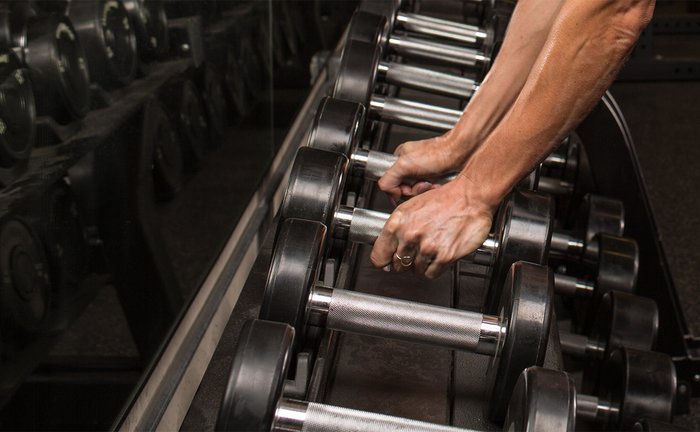
Your goal: Get fitter than ever before. Seriously!
Research from University of British Columbia, Canada, found that women over the age of 65 were able increase strength, bone mineral density, and flexibly after just one year of resistance training.[2] This is definitely not the time to give up.
Strength training remains important; aside from helping you with better posture and making simple tasks like opening a jar easier, it will also help improve your balance, reducing your risk of falling. "The biggest risk as we age is falling due to loss in strength and muscle mass," says Booth.
Just remember to adapt your strength-training style as needed. You're not trying to prove yourself to anyone now, so build your base with controlled, deliberate moves using a lighter weight load. "Work on exercises that will benefit your posture such as deadlifts, farmer's walks, and Turkish get-ups" Booth says.
And don't forget the importance of good old cardio. "Get out every day for a brisk walk," Booth adds. "It's simply good for your overall wellbeing."
References
- Schmitz, K. H., Hannan, P. J., Stovitz, S. D., Bryan, C. J., Warren, M., & Jensen, M. D. (2007). Strength training and adiposity in premenopausal women: strong, healthy, and empowered study. The American Journal of Clinical Nutrition, 86(3), 566-572.
- Rhodes, E. C., Martin, A. D., Taunton, J. E., Donnelly, M., Warren, J., & Elliot, J. (2000). Effects of one year of resistance training on the relation between muscular strength and bone density in elderly women. British Journal of Sports Medicine, 34(1), 18-22.
